|
|
|
Sort Order |
|
|
|
Items / Page
|
|
|
|
|
|
|
| Srl | Item |
| 1 |
ID:
159391


|
|
|
|
|
| Summary/Abstract |
The literary corpus of the sixteenth-century North Indian bhakti poet-saint Mirabai has grown over time as devotees have used (and continue to use) her name, life story and first-person voice in poems. Drawing on hagiographies, written and oral poems, printed collections and performative engagements with Mira, I argue that these moments of autobiographical ‘posing’ reveal autobiography as powerful for speaking about religious transformation, in particular the issues of authority, experience and critique. Furthermore, the centrality of autobiographical speech in the tradition is linked to an increasing emphasis on Mira as a figure of religious transformation, and bhakti itself as a transformative path.
|
|
|
|
|
|
|
|
|
|
|
|
|
|
|
|
| 2 |
ID:
170178
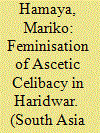

|
|
|
|
|
| Summary/Abstract |
Case studies of male–female ascetic couples in Haridwar in North India complicate the widespread knowledge that male Hindu renouncers are supposed to observe celibacy. Based on extended ethnographic work, this article investigates specifically how female ascetics tackle the dominant androcentric discourses and practise celibacy from a female point of view, focussing on their practice of sevā or spiritual service. The article argues that while female ascetics do not object to the androcentric ideology of celibacy, they follow it only partly, switching their focus from sexual abstinence to devotional sevā. Doing this, female ascetics value controlling emotion more than controlling sexual desire. Through the practice of sevā, they aim for fostering an attitude of devotion as a feminised manifestation of their efforts towards reaching spiritual attainment.
|
|
|
|
|
|
|
|
|
|
|
|
|
|
|
|
| 3 |
ID:
140456
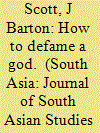

|
|
|
|
|
| Summary/Abstract |
This article argues that competing ideas about the nature of public selfhood structured the Maharaj Libel Case, as well as colonial publics more broadly. Jadunathji Maharaj had, in effect, lost his libel suit even before it went to court. For libel law, the essence of the human person is a private self that owns various forms of property, including the public persona known as ‘reputation’. For the Hindu Pushtimarg, meanwhile, the Maharaj was considered an incarnation of Krishna; his religious or public self preceded and was the ontological ground for his merely personal being. To compare these two conceptualisations of the self is to see how selfhood became an important site for the articulation of the public in colonial India.
|
|
|
|
|
|
|
|
|
|
|
|
|
|
|
|
| 4 |
ID:
097134
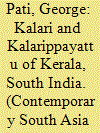

|
|
|
|
|
| Publication |
2010.
|
| Summary/Abstract |
Kalari is an arena that imparts a whole body of knowledge in Kerala, south India, including kalarippayattu (martial arts). In recent times, these centers have been exclusively referred to as cultural performance centers, corroding the intrinsic value and diluting the religious essence of such places and praxis. This essay explores kalari and kalarippayattu from a Hindu religious perspective and suggests that kalari and kalarippayattu embody the celestial and terrestrial in its spatial and corporeal representations. Divided into two sections, the essay first discusses some historical background of kalari and kalarippayattu traditions; and, secondly, from a bhakti perspective it examines kalari and kalarippayattu, proposing it to be a nexus of the celestial, corporeal, and terrestrial.
|
|
|
|
|
|
|
|
|
|
|
|
|
|
|
|
| 5 |
ID:
103646
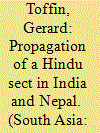

|
|
|
|
|
| Publication |
2011.
|
| Summary/Abstract |
The Krishna-PraCSAS_A_549082_O_XML_IMAGES/CSAS_A_549082_O_ILF0001.gifamacrmi-sampradamacry is a Hindu non-caste reformist sect belonging to the bhakti and sant streams. It originated in seventeenth-century Gujarat and rejects life-cycle rituals and sacrificial rites. Its expansion over the last decades in Nepal and Northeast India has been a remarkable phenomenon. This article examines the historical propagation of the congregation. In the past, the influence of charismatic religious figures prevailed; today, teaching by young preachers and the use of new means of communication, especially through mega-ceremonies of the pamacrramacryaCSAS_A_549082_O_XML_IMAGES/CSAS_A_549082_O_ILF0009.gif type, play a major role. This development has led to internal conflicts. A dissenting minority advocates a return to the original nirgun (formless, devoid of qualities) ideas of the group.
|
|
|
|
|
|
|
|
|
|
|
|
|
|
|
|
| 6 |
ID:
091722
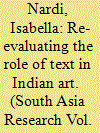

|
|
|
|
|
| Publication |
2009.
|
| Summary/Abstract |
This article seeks to rediscover and contemporise the importance of using the shastras, Sanskrit technical treatises, as a standard of critique to analyse Indian art. The applicability and interpretative value of this approach for the study of Indian art history is exemplified by a case study of the miniature paintings representing the image of Shri Nathji in Nathdvara. Analysing the image of Shri Nathji as it appears in Nathdvara miniature paintings from different shastric points of views, including the theories of measurement and proportion, postures, mudras and rasa theory, the article proposes to include in the definition of shastra not only canonical textual sources but also practical/visual and oral/verbal transmitted knowledge. While textual concepts are used as a methodology for the reading of the image of Shri Nathji, the canonical shastric theories are considered side by side with such oral and practical knowledge in an attempt to redefine the concept of 'text' for Indian tradition, and especially to further our knowledge on the relationship between text and image in Indian art.
|
|
|
|
|
|
|
|
|
|
|
|
|
|
|
|
| 7 |
ID:
164019
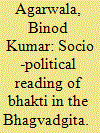

|
|
|
|
|
|
|
|